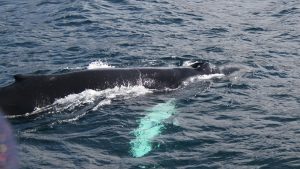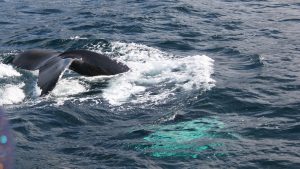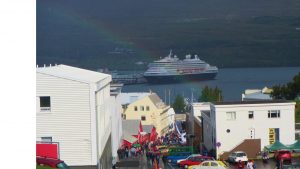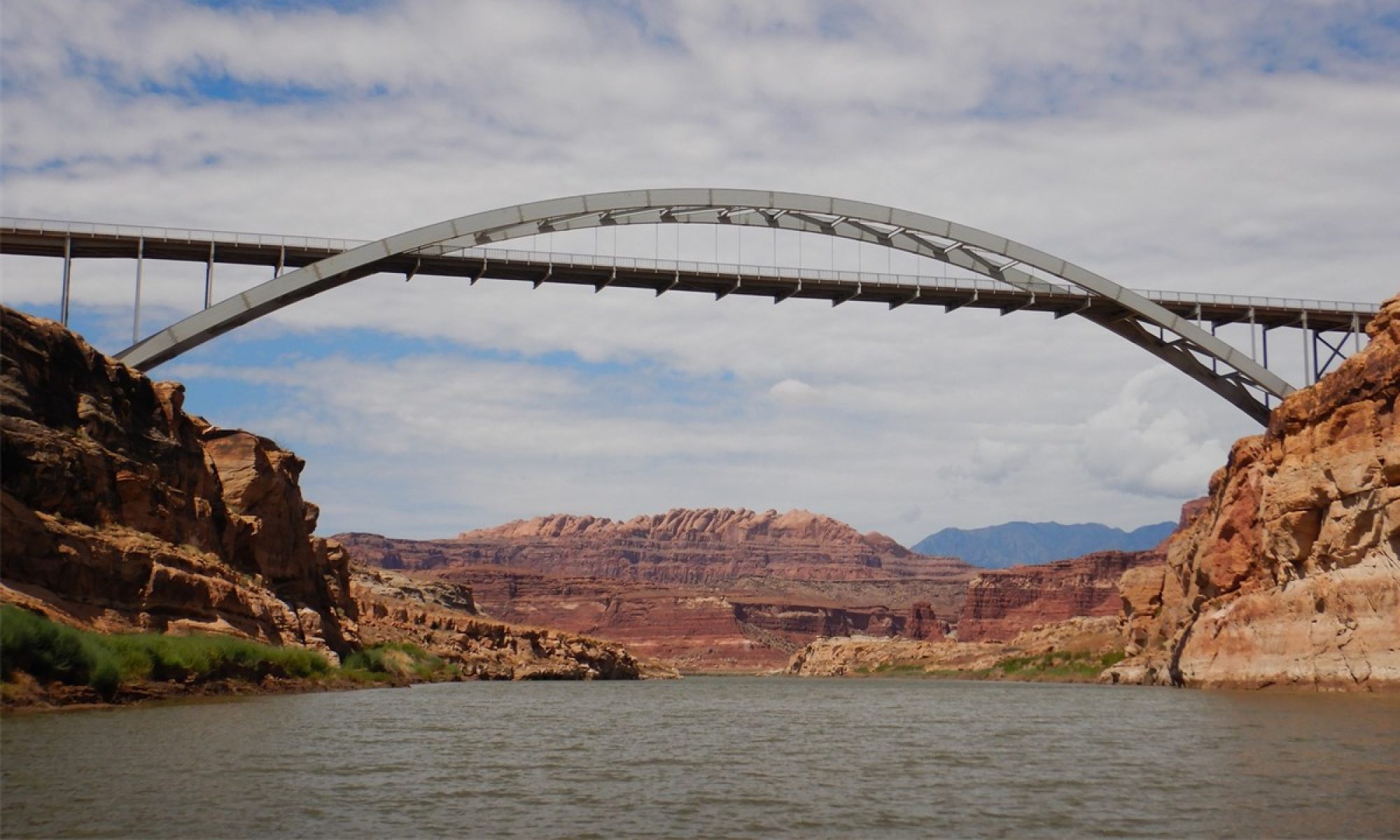August 2018
On to the Northern Coast of Iceland
Today, we departure from Stykkisholmur and traveled to Eriksstader where we visited a replica of the Viking farm of Eric the Red – father of Leif Erikson. Here we entered a functional, replica sod-house that was about 8’ x 14’ which would house up to 14 people during the cold Icelandic winter months. The local curator, Siggi, gave us insights into the life in the era of the Vikings and the life of Eric the Red. Next, after a short drive past the local sheep farms, we came to the horse farm, Gauksmyri, where we enjoyed a lunch buffet including horse meat! After lunch, the owners put on a horse show demonstrating the 5 gaits of Icelandic horses – walk, trot, tolt, gallop and flying. The Icelandic horses are smaller than many other horse breeds, but it is the only one that instinctively has a tolt gait, and the Gauksmyri farm has 1200 horses. No other breed of horse is allowed in Iceland! From here, we rejoined the N1-Ring Road and traveled to Akureyri, stopping along the way to visit the Kolugljufur canyon – a beautiful incised waterfall that is a bit “off the beaten path” and discouraged from the trip due to the risk of falling-in. Next, we followed the shore of the Eyjafjordur fjord before we arrived in Akureyri, Iceland’s 2nd largest city, (pop. 19,000), located only ~60 miles from the Arctic Circle. Akureyri was the home town of our tour guide, Heiddis’, and after a short drive about town, we arrived at the hotel just in time for happy hour and a dinner of salmon and lamb steak.
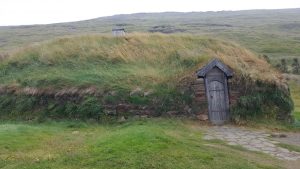
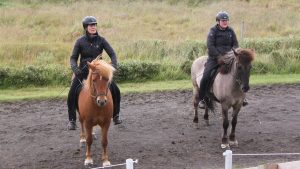


The next morning began with a short drive to Godafoss – “Waterfall of the Gods” where we explored the local trails surrounding it. From here, we traveled past Lake Myvatn to visit a local gentleman who bakes bread in the ground from the thermal steam escaping the natural vents. After tasting the brown-bread (with a little butter), we traveled a short way over the Namafjall mountain into an active geothermal area located in the ancient crater of the Krafla Volcano, where the 60 MW Krafla Geothermal Power Plant was located. The original pilot part of the Plant (7 MW) was built in the 1970’s, and after demonstrating success, was expanded and replicated in a number of locations in Iceland. After a brief tour of the Plant, we traveled down to the Namaskard Thermal Field where we observed blowing fumaroles and boiling mud pots. From here, we traveled a short distance to take a close look at the 2000-year-old lava formations at Dimmuborgir (Dark Castles), formed from the dome collapse of a large, hollow, lava-tube. Then we drove back to the edge of Kake Myvatn (“Lake of Midges”) where we ate lunch at a local hotel and took a walk on Skutustadagigar, the best-known cluster of pseudo craters in Iceland, (while fighting-off the incredible number of flying midges surrounding the area.) Lake Myvatn legend has it that this was where the last heathen chieftain, Borgeir, threw the symbols of the heathen gods into the waters in the year of 1000 when Icelanders converted to Christianity. From here, we returned to Akureyri a bit early for a walk through the town’s Botanical Gardens and a round of drinks at the hotel bar, before preparing for our “Home Dinner” visit.

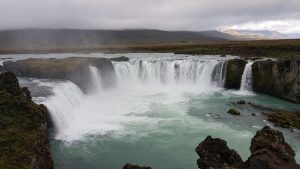
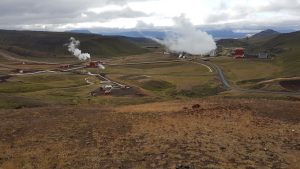


For dinner, we headed to Johan and Gudrun’s home, where they and their two daughters hosted us for a home-cooked meal of orange trout almandine, potatoes and salad, with home-baked bread, tea and chocolates. While there, we all had a lively discussion about where each of us were from, world issues, life-philosophies and a number of other far-reaching topics, before we said our “goodbyes” and returned to our hotel.
The morning we drove 45-minutes back out to the northern-tip of the peninsula along the Eyjafjordur fiord to the port town of Dalvik to take a whale-watching trip. To prepare for the chilly boat trip, all 40 of us put on arctic jumpsuits before heading onto an open-air restored fishing vessel for the 40-minute trip north towards the open sea. The weather was beautiful with clear, crisp skies, and we often spotted whales “spouting” in the distance. However, after a frustrating series of failed chased, the humpback whale finally surfaced and cruised beside us before we began our trip back. On the return trip, we stopped to fish a local 60-ft deep bank, and after a couple of “small” catches, one of our group caught a 15-pound cod – large for this vessel – which we prepared with the others for a fish-fry back onshore. We then walked down the street to a little Café, “Gisle, Eirikur & Helgi”, for lunch. For a fixed price, we received all-you-can-eat fish soup, salad, bread and tea. The good weather enticed us to enjoy lunch outside before we made the trip back to Akureyri. In Akureyri, we took advantage of the free afternoon and good weather to shop and walk through the town, enjoying the music, classic cars, and vendors that lined the streets for the weekend’s local festival. On our walk, we stopped at a few art galleries, and met a visiting artist, Salman Ezzammoury, and talked with him about his art while enjoying a glass of wine. That night, we packed and readied ourselves to tomorrow’s flight back to Rejkjavik.

